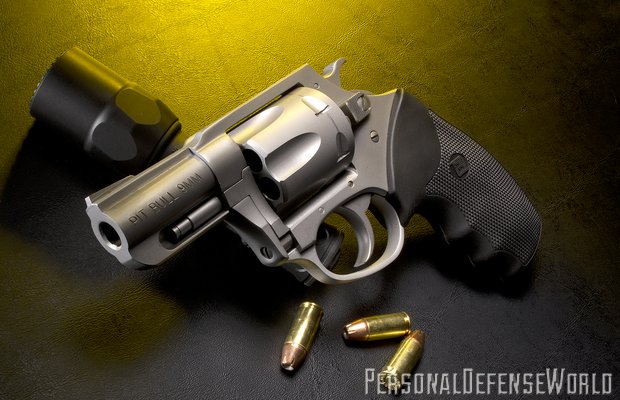Revolvers are simple compared to semi-automatic pistols. Simple is good. Pull the trigger of a revolver—if it fails to fire, pull the trigger again. With a semi-auto, a failure to fire means the user must go through a full procedure to get the pistol back online. Drop a magazine in the snow, mud or tall grass, and your semi-auto is out of action. The cylinder of a revolver, on the other hand, holds its cartridges and is attached to the frame. Nothing to drop, nothing to lose. And revolvers don’t leave empties rolling around on the floor, either. Very simple.
The complication with revolvers arises when they are chambered in rimless cartridges. Happily, Charter Arms has introduced a 9mm revolver—the Pitbull—that makes the complicated simple.
Gun Details
Advertisement — Continue Reading Below
Rimmed cartridges like the .38 Special, .357 Magnum, .45 Long Colt and others have a rim that holds the cartridge in the chamber. Semi-auto cartridges like the 9mm, .40 S&W, .45 ACP and others are considered rimless. Technically, they are not “rimless,” but the rim is slightly smaller than the diameter of the case. For rimless cartridges to work in a revolver, some sort of device is needed to hold the cartridge in the chamber of the cylinder. Great revolvers of the past, like the M1917s the United States called into service during WWI, had a solution. Both Colt and Smith & Wesson had production in place for big-bore revolvers—Colt had the Model 1909 and S&W the .44 Hand Ejector—and S&W came up with a half-moon clip that held three .45 ACP cartridges in the revolver’s chambers. Colt soon followed suit. These clips allowed rimless cartridges to be used in revolvers. Currently, both S&W and Taurus offer full-moon or star clips that hold a full cylinder of rimless cartridges.
























